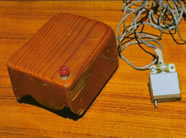![]() Tandy was originally formed in 1919 by Norton Hinckley and Dave L. Tandy, and was known as the Hinckley-Tandy Leather Company. In 1963 it bought Radio Shack, paving the way for the company to be part of the computer revolution in the 1970s. In 1977 it introduced the TRS-80 to record sales and followed up with the color version in 1980. Later machines were IBM compatible, as most home computers of the day were clones of the venerable desktop made by Big Blue. The Tandy line sported a cheaper price along with better than average sound and video.
Tandy was originally formed in 1919 by Norton Hinckley and Dave L. Tandy, and was known as the Hinckley-Tandy Leather Company. In 1963 it bought Radio Shack, paving the way for the company to be part of the computer revolution in the 1970s. In 1977 it introduced the TRS-80 to record sales and followed up with the color version in 1980. Later machines were IBM compatible, as most home computers of the day were clones of the venerable desktop made by Big Blue. The Tandy line sported a cheaper price along with better than average sound and video.
Tandy has become a well remembered name in the annals of computer history and the minds of millions of computer geeks everywhere. Many early computer enthusiasts cut their teeth on a Tandy in the 80’s, and the color version sold quite well, making them a fierce competitor with other computers of it’s time such as the Apple II, <IBM-PC, and Commodore 64. Today the company lives on without the Tandy name and still operates thousands of Radio Shack stores worldwide.





